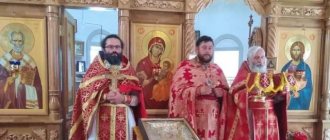In every major city in Russia, along with churches and monasteries, there is a main cathedral. It is often called a diocese. It really contains the place of honor of the diocese - the bishop, but the possessions of the diocese itself are much wider. This article talks about the meaning of the word "diocese" and its role in Christian life.
Orthodox diocese
The modern charter of the Eastern Orthodox Church understands by this word a church headed by a bishop, which unites under its leadership nearby monasteries, parishes, chapels and other elements of church administration. The boundaries of each diocese are determined by the main body in charge of the spiritual affairs of the country - the Holy Synod. In addition, these boundaries correspond to the division of the country into regions, republics, territories and districts, that is, with the usual administrative-territorial division.
So, having defined what a diocese is in Orthodoxy, it is worth talking about the person who heads it - the bishop. He governs the territory under his jurisdiction, solving church affairs and problems that may arise among the clergy, at his own discretion. He may be in various ranks: bishop, archbishop or metropolitan, depending on the location and importance of his diocese. However, in addition to it, auxiliary bodies are also involved in the affairs of the region - the diocesan assembly and council, which are also of no small importance.
In addition to the territories of the Russian Federation, the Russian Orthodox Church also includes dioceses located in other countries of the world - almost all of them have at least one Orthodox parish.
In 2011, a reform was carried out that established a three-level hierarchy of elements of church governance: patriarchate, metropolitanate, diocese. Thus, the boundaries and sizes of the regions are reduced, thereby allowing the clergy heading them to better delve into the problems of the diocese under their jurisdiction.
In Rus', bishops often became people of more or less noble origin, from noble families. The laity also actively participated in the selection of new heads of dioceses - exactly the same trend could be traced in the first centuries of Christianity, when absolutely all elements of the church, both clergy and parishioners, took part in such elections. However, during the introduction of Orthodoxy in Rus', only princes could choose bishops.
Composition of the Russian Orthodox Church
The entire Russian Orthodox Church is divided into separate parts. It includes numerous dioceses, metropolises, Exarchates, Metropolitan districts, Autonomous and Self-Governing Churches, brotherhoods and sisterhoods, missions, vicariates, synodal institutions, monasteries, parishes and deaneries. Theological educational institutions, representative offices and metochions also belong to the Orthodox Church. Thus, we can say that a diocese is one of the main parts of the Russian Orthodox Church, which includes many religious institutions, created for the convenience of organizing local administration.
Number of areas
Now the number of dioceses of the church is quite large - both in Orthodoxy and Catholicism, but it was even greater in the first centuries of the existence of Christianity, when it became the official religion: then each church was headed by a bishop and was, accordingly, a separate diocese. But over time, the number of such units increased more and more, and the number of clergy was reduced, uniting several parishes on a territorial basis. And if we talk about the “barbarian” territories where the church sent its missionaries, then a single bishop for a gigantic territory was enough for them (this, for example, happened in relation to Scythia Minor, where Byzantium sent missions).
Story
See also: Bishops and civil government
| This section need additional quotes for verification . |
Dioceses of the Roman Empire, 400 AD
In the later organization of the Roman Empire, increasingly subdivided provinces were administratively linked into a larger unit, the diocese (Latin dioecy
, from the Greek term διοίκησις, meaning "administration").[2]
Christianity received legal status in 313 with the Edict of Milan. Churches began to organize into dioceses based on civil dioceses rather than in larger regional imperial districts.[3] These dioceses were often smaller than provinces. Christianity was declared the official religion of the empire by Theodosius I in 380. Constantine I in 318 gave plaintiffs the right to transfer legal cases from civil courts to bishops.[4] This situation must have been unlikely for Julian to survive, 361–363. Episcopal courts were no longer heard of in the East until 398, and in the West in 408. The quality of these courts was low and unsuspicious, as the Bishop of Alexandria Troas discovered that the clergy were profiting corruptly. However, these courts were popular because people could get justice quickly without being charged fees.[5] Bishops did not participate in civil administration until the city councils, in decline, lost great power to a group of "notables" consisting of the wealthiest councilors, influential and wealthy men legally exempt from council service, retired military officers and bishops. after 450 AD As the Western Empire collapsed in the 5th century, bishops in Western Europe took over much of the role of the former Roman rulers. A similar, although less pronounced, development occurred in the East, where the Roman administrative apparatus was largely retained by the Byzantine Empire. In modern times, many dioceses, although later divided, retained the boundaries of long-vanished Roman administrative divisions. Regarding Gaul, Bruce Eagles noted that "in France it has long been an academic commonplace that medieval dioceses and their constituent pagi
, were the direct territorial heirs of the Roman
disciplines
."[6]
Modern use of the word "diocese" tends to refer to the area of jurisdiction of the bishop. It became common during the coy "classical" structural evolution of the Carolingian Empire in the 9th century, but this use developed from much earlier parochia
("parish"; Late Latin comes from the Greek παροικία
Paroikia
), dating back to the increasingly formalized structure of Christian authority in the 4th century.[7]
Archdiocese
Dioceses governed by an archbishop are usually called archdioceses; The metropolitan sees most of them, being placed at the head of the church province. Some of them are suffragettes of the metropolitan see or directly subordinate to the Holy See.
The term "archdiocese" is not found in Canon Law, with the terms "diocese" and "episcopal vision" being applied to the area under the ecclesiastical jurisdiction of any bishop.[8] If the title of archbishop is given personal
basis for the diocesan bishop, his diocese thus does not become an archdiocese.
Lutheranism
Further information: List of Lutheran dioceses and archdioceses
Certain Lutheran denominations such as the Church of Sweden have separate dioceses, similar to Catholics. These dioceses and archdioceses are governed by a bishop (see Archbishop of Uppsala).[10] Other Lutheran organizations and synods that have dioceses and bishops include the Church of Denmark, the Evangelical Lutheran Church of Finland, the Evangelical Church in Germany (partially), and the Church of Norway.[11]
From about the 13th century until the German mediatization of 1803, most of the bishops of the Holy Roman Empire were prince-bishops, and as such exercised political authority over the principality, their so-called Hochstift, which was separate and usually significantly smaller than their diocese, over which they exercised only ordinary bishop's powers.
Some American Lutheran church organizations, such as the Evangelical Lutheran Church in America, have a bishop serving as head of the synod,[12] but the synod does not have dioceses or archdioceses like the churches listed above. Rather, it is divided into a middle judiciary.[13]
The Lutheran Church - International, based in Springfield, Illinois, currently uses a traditional diocesan structure with four dioceses in North America. The current president is Archbishop Robert W. Hotez.[14]
Church of England and Anglican Communion
Further information: List of dioceses of the Anglican Communion
St Patrick's Cathedral, seat of the Church of England Diocese of Armagh in the Church of Ireland
After the English Reformation, the Church of England retained the existing diocesan structure, which has been maintained throughout the Anglican Communion. The only change is that the areas under the Archbishop of Canterbury and the Archbishop of York are properly called dioceses rather than archbishops: they are the metropolitan bishops of their respective provinces and the bishops of their diocese, and have the office of archbishop.
In the Anglican Church in Aotearoa, New Zealand and Polynesia, it uses the specific term "Episcopal Unit" for dioceses and pihopatanga due to its unique tri- tikanga
(culture) system. Pihopatanga are the tribal jurisdictions of Maori pihopa (bishops), which overlap with the "dioceses of New Zealand" (i.e. the geographic jurisdiction of the Pākehā (European) bishops); they operate as dioceses, but are never called that.[9]
Recommendations
- Webster's Encyclopedic Comprehensive Dictionary of the English Language
, 1989 - Doyle, Dennis M. (2016). What is Christianity?
. Paulist Press. ISBN 9781587686207. - Bright, William (1860). History of the Church, from the Edict of Milan 313 to the Council of Chalcedon 451
. JH and Jas. Parker. clause 4. - Bateman, K. (January 17, 2022). "Bateman, C.G., Higher" Courts of the "Roman Empire: Constantine's Judicial Role for Bishops (17 January 2022). Available at SSRN: https://ssrn.com/abstract=2938800 or https://dx. doi.org/10.2139/ssrn.2938800 ". SSRN
: 24. External link in | title = (help) - A. H. M. Jones, The Later Roman Empire, 1964, pp. 480-481 ISBN 0-8018-3285-3
- Eagles, Bruce (2004). "Britons and Saxons on the Eastern Frontier of Civitas Durotrigum". Britain
.
35
.
p. 234., noting, for example, Wightman, E.M. (1985). Gaul Belgica
. London. paragraph 26. - Chisholm, Hugh, ed. (1911). "Diocese". Encyclopedia Britannica
.
8
(11th ed.). Cambridge University Press. paragraph 279. - Gerbermann, Charles, ed. (1913). "Archdiocese". Catholic Encyclopedia
. New York: Robert Appleton Company. - clause 1
- Adam of Bremen, Gesta Hammaburgensis ecclesiae pontificum Archived 2005-02-07 on the Wayback Machine, online text in Latin; Sholia 94.
- see List of Lutheran dioceses and archdioceses
. - Office of the Presiding Bishop at ELCA.org. Retrieved June 4, 2010.
- LERNing Newsletter July 2005 Archived 2009-12-16 in the Wayback Machine at ELCA.org. Retrieved June 4, 2010.
- International Lutheran Church. "Welcome to the International Lutheran Church." International Lutheran Church
. - "Bishops' Council". Church of God in Christ
. Retrieved 2017-09-04. - "Executive power". Church of God in Christ
. Retrieved 2017-09-04. - Pinson, William M., Jr. "Trends in Baptist Politics". Baptist History and Heritage Society. Archived from the original on 2007-10-13. Magazine citation required | journal = (help)CS1 maint: multiple names: list of authors (link)
Catholic Church
Coat of arms of the Roman Catholic Diocese of Las Vegas
Further information: List of Catholic dioceses (alphabetical) and List of Catholic dioceses (structured view)
As of April 2022[Update], there are 2,898 permanent dioceses in the Catholic Church: 1 papal branch, 649 archdioceses (including 9 patriarchates, 4 major archdioceses, 560 metropolitan dioceses, 76 united archdioceses) and 2,248 dioceses in the world. [ quote needed
]
in the Eastern Catholic Churches in communion with the Papal equivalent unit called a diocese
.[
need a quote
]
Secular jurisdictions
Imperial Roman administration
Further information: Roman Province
Originally a diocese
(ἐπαρχίᾱ,
diocese
) was the Greek equivalent of the Latin term
province
, one of the regions of the Roman Empire.
Thus, it was used, mainly in the eastern parts of the Empire, to designate the Roman provinces. Period, the term eparch
(Greek: ἔπαρχος,
dioceses
), however, denoting the governor of a diocese, was most often used to denote the praetorian prefects (singular in Greek: ἔπαρχος τοῦ πραιτωρίου, "diocese praetorian"), in charge of the prefects Torian prefectures, and to the Eparch Constantinople, city prefect.
Byzantine administration
The Dominate-period administrative system was maintained during the Byzantine Empire period until the 7th century. As Greek became the main administrative language of the Empire, replacing Latin, in the second half of the 6th century even the provinces of the Exarchate of Ravenna, reconquered by Italy, were named eparchies
in both Greek and Latin.
In the second half of the 7th century the old provincial administration was replaced by a thematic system. However, even after this, the term of the dioceses
remained in use until the 840s for the senior administrative officer of each
topic
, under the control
of a strategos
. After this, dioceses in some cases become governors of cities, but the most important among them was the Diocese of Constantinople, whose office had wide powers and functioned continuously until the 13th century.[1]
Modern Greece and Cyprus
Further information: Provinces of Greece
Period, term diocese
was revived as one of the administrative sub-provincial units of post-Ottoman independent Greece, the country is divided into
nomoi
("Prefectures"), some of which were in turn subdivided into
dioceses
.
From 1887, dioceses
were abolished as de facto administrative units, but were retained for some government services, especially financial services and education, and for electoral purposes.
Before World War II, there were a total of 139 dioceses
, and after the war with the addition of the Dodecanese Islands, the number grew to 147. Provinces were abolished on the mainland (but retained for the islands) as part of a large-scale administrative reform carried out in 1997 (the "Capodistrian Plan") and replaced by enlarged municipalities (
demoi
).
In Cyprus, period, term diocese
used to refer to the Districts of Cyprus.
Churches that have bishops but not dioceses
See also: Methodist Circuit and Episcopal Region (United Methodist Church)
in the United Methodist Church (USA and some other countries), the bishop receives oversight of a geographic area called an episcopal area. Each episcopal area contains one or more annual conferences, so the churches and clergy are organized under the leadership of the bishop. Thus, the use of the term "diocese" as applied to geography is most equivalent in the United Methodist Church, while each annual conference is part of one episcopal area (although that area may include more than one conference). The African Methodist Episcopal Church has a similar structure to the United Methodist Church, also using an Episcopal zone. Note that bishops govern the church as a single pew.[ citation needed
]
in the British Methodist Church and the Irish Methodist Church, the closest equivalent to a diocese is a 'scheme'. Each local church belongs to a district, and the district is overseen by a superintendent who has pastoral responsibilities for all the district churches (although in practice he or she delegates such responsibilities to other elders, each of whom looks after his or her part of the district and presides over the meetings of the local church as deputy superintendents). This echoes the practice of the early church, where the bishop was supported by a bench of elders. The contours are grouped into regions. This, combined with local Church membership, is called a “Connection.” This 18th century term, endorsed by John Wesley, describes people working in different geographic locations with each other. Personal supervision of the Methodist Church is exercised by the President of the Conference, an elder elected by the Methodist Conference for a term of one year; such supervision is exercised by the vice-president, who is always a deacon or layman. Each district is headed by a "chairman", an elder who oversees the district. Although a district is similar in size to a diocese and chairmen meet regularly with their bishop partners, a Methodist superintendent is closer in function to a bishop than a chairperson. The county's goal is to resource the circuits; otherwise it has no function.[ quote needed
]








